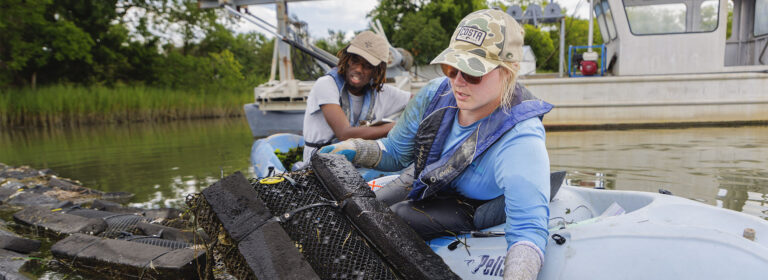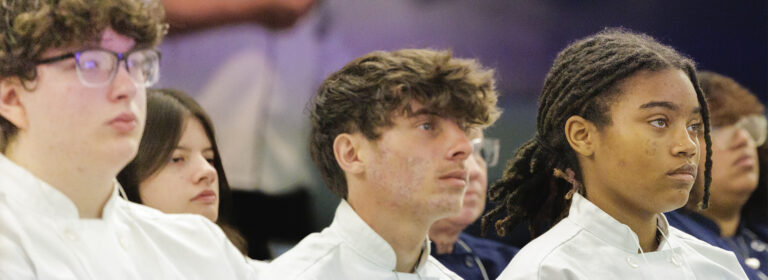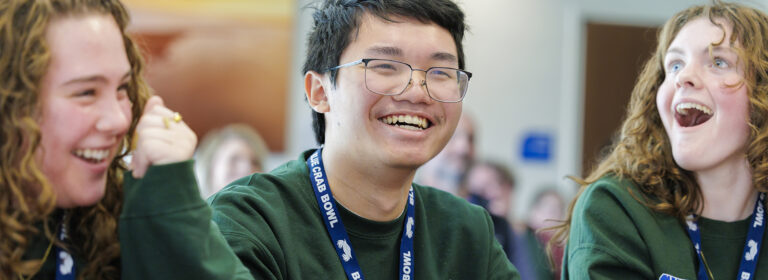The human side of technology: Knauss fellow coordinates outreach for ocean renewable energy
Behind ribbon cuttings and million-dollar funding announcements for ocean energy, there are years of planning — a process that Knauss Marine Policy Fellow Shaelyn Patzer likens to planning for the Olympic Games.
“The majority of what I did during my fellowship year was laying the groundwork for future projects,” Patzer said. “The way funding cycles work, you can have a great idea now, and it won’t actually manifest until two years down the line.”
As a Knauss Fellow, Patzer played a coordinating role between the Department of Energy’s (DOE) Water Power Technologies Office, Wind Energy Technologies Office, and the National Sea Grant Office, three programs within the U.S. Department of Energy and NOAA Research. Under President Biden’s clean energy goals, renewable energy from the ocean has emerged as part of the “blue economy” — a way to create economic opportunity and sustainable energy. As marine energy efforts expand, especially offshore wind projects, the need for a community-centered approach has also increased.
“Successful energy transitions rely on engaging with communities to develop paths that work for their needs and priorities,” Patzer said. “There’s been an increased awareness that to make that work, we need social science. Energy transitions aren’t just about tech development, they’re also about how technology interacts with humans. To solve human-centered problems, we need engagement on a local and regional level with the humans whose lives intersect with those issues.”
As part of the Department of Energy’s social science portfolio to answer those human-centered questions, DOE partnered with Sea Grant on a $1.11 million social science funding opportunity about how renewable energy impacts co-use of coastal spaces, like offshore wind and the fishing industry.
During Patzer’s Knauss Fellowship, she led a series of 22 listening sessions with all 34 state Sea Grant Programs. The listening sessions focused on a broad range of energy-related concerns for the Sea Grant programs. The sessions were divided into six regions, each with different topical areas focused on research or extension. The sessions brought out different topics in each region. In the Northeast U.S., where offshore wind projects are further along than in other areas of the country, the Sea Grant programs had a larger focus on offshore wind.
“Every Sea Grant program is different, so their understanding of energy — opportunities, costs, and the vital role it plays in climate change resilience — is going to be different,” Patzer said. “The Carolinas were aware of the possible eco-tourism opportunities associated with offshore wind, Alaska mentioned energy challenges experienced by remote communities, and nearly everyone talked about how their communities were experiencing solar.”

“Energy transitions aren’t just about tech development, they’re also about how technology interacts with humans. To solve human-centered problems, we need engagement on a local and regional level,” Patzer said.
“Whether or not a program has scoped out what they think their niche will be in the energy space, there does seem to be a broad interest in learning more,” Patzer said.
Now, as an ORISE Fellow continuing with the Department of Energy, Patzer is sifting through the information from these meetings. After analyzing the discussions, Patzer will summarize the types of energy issues and priorities for different Sea Grant programs, resources and partnership examples, and common themes across the country.
“Whether or not a program has scoped out what they think their niche will be in the energy space, there does seem to be a broad interest in learning more,” Patzer said.
While coordinating between the three different offices, Patzer learned to balance the priorities of different departments within interagency initiatives. While the Wind Energy Technologies Office focuses mainly on offshore wind, the Water Power Technologies Office also includes technology that could harness power from waves, tides, and ocean currents.
She also learned how agencies within the federal government differ from one another. During her Knauss Fellowship, Patzer contributed to meetings leading up to launching the Offshore Wind Liaison position that will help support Sea Grant programs in dealing with issues related to offshore wind.
“A year seems long, but in the government world it can actually be short. In order to see an effort through, you need to be there for a while,” Patzer said. “I’m really excited that I’m able to stick around and watch my projects — keep watering them, tending to them, and hopefully see them blossom into something excellent.”
Photos Contributed by Shaelyn Patzer and Dominion Energy
Additional photo by Aileen Devlin | Virginia Sea Grant
Written by Madeleine Jepsen | Virginia Sea Grant
Published March 30, 2022.





